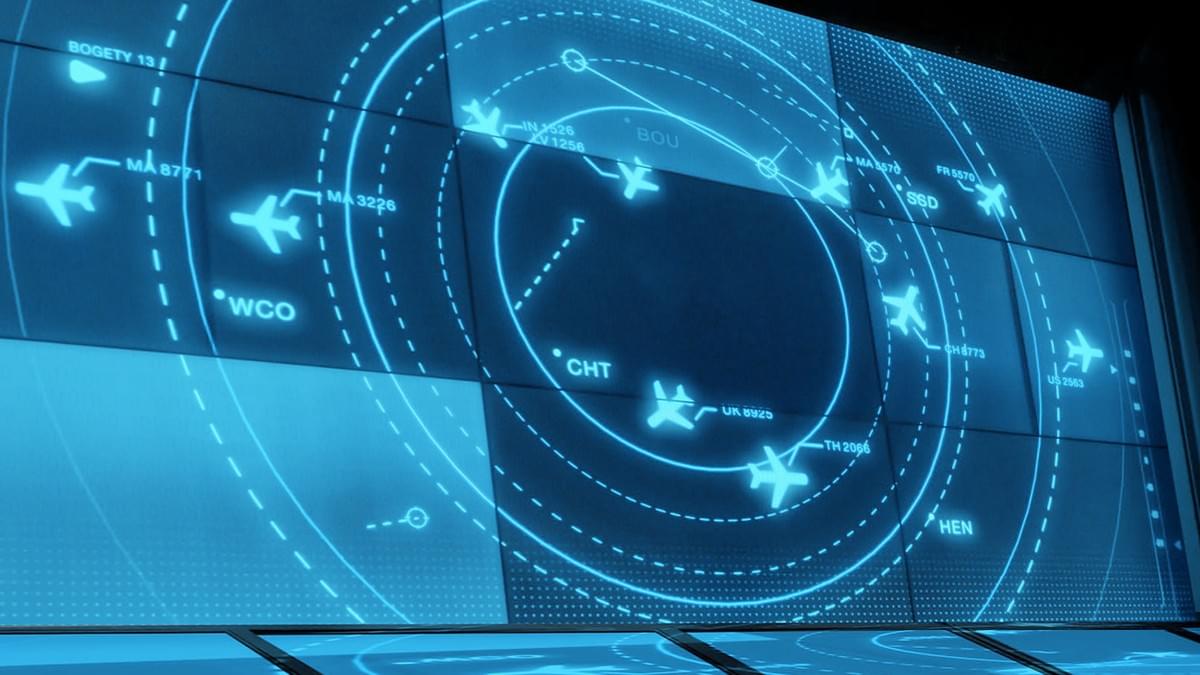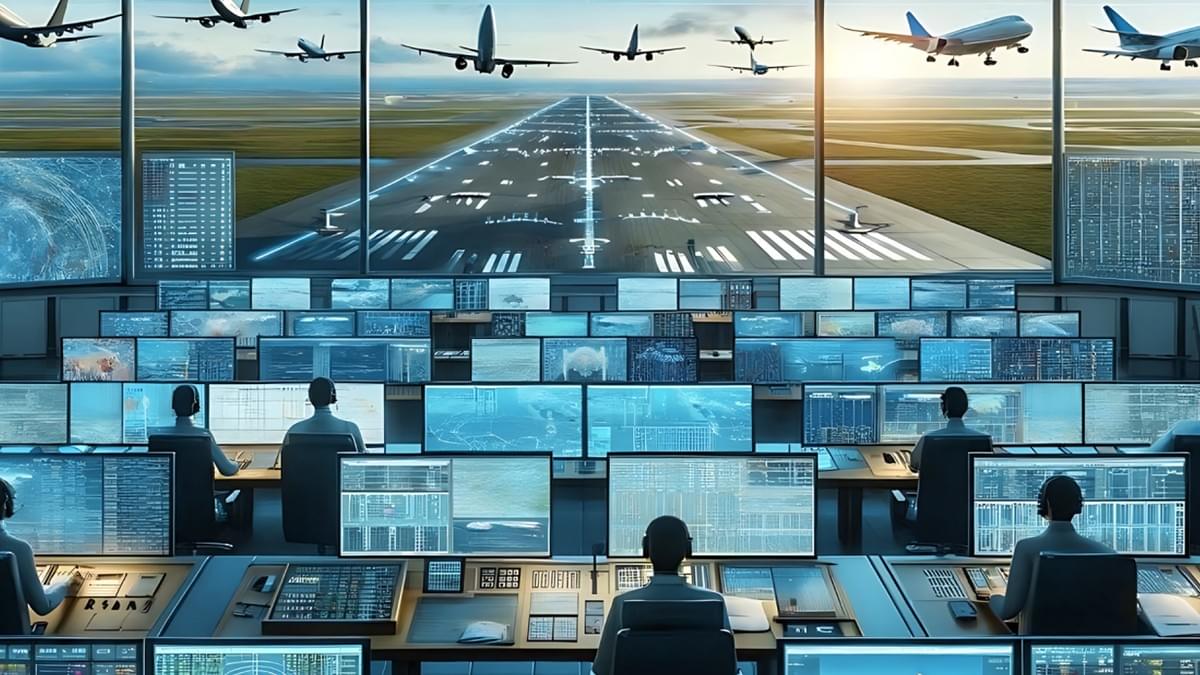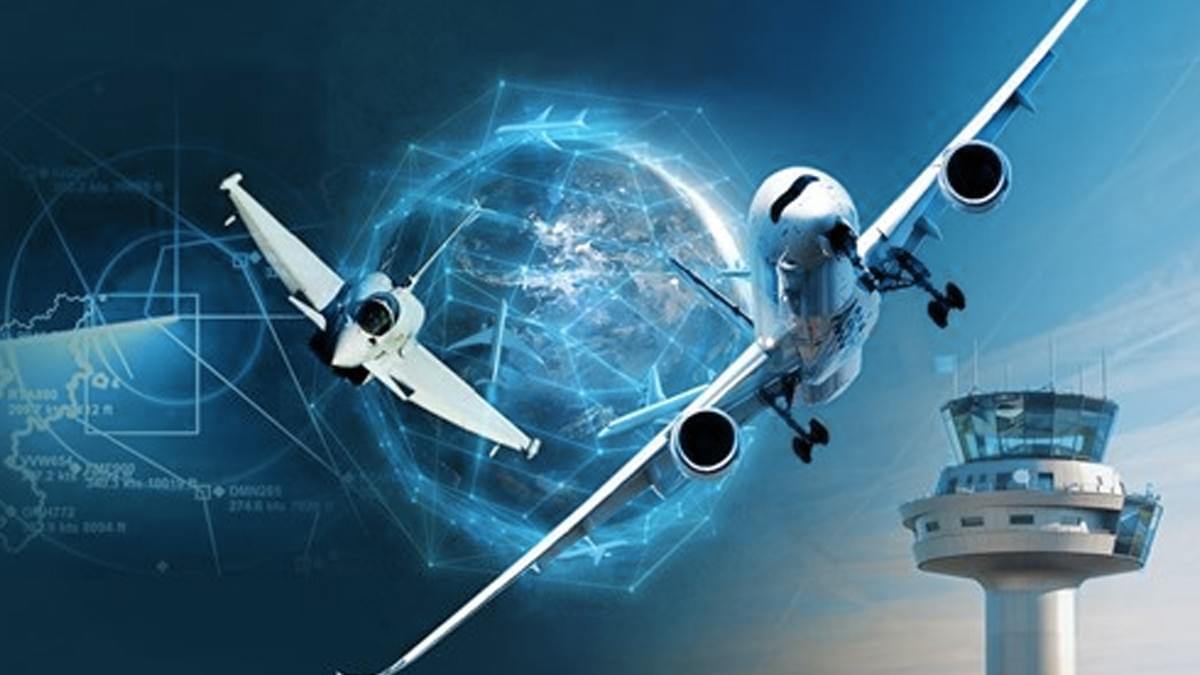Air traffic management (ATM) is the backbone of global aviation, ensuring millions of flights operate safely, efficiently, and on time every day. Without robust air traffic management, the skies would descend into chaos—delays, collisions, and operational failures would become commonplace, undermining the reliability of air travel.
In an era where air traffic is growing exponentially—with passenger numbers projected to double by 2040—air traffic management has never been more critical. It encompasses a complex network of systems, technologies, and professionals working in harmony to manage aircraft from takeoff to landing, and even in remote airspace. Whether you’re a pilot, airline operator, airport manager, or simply a frequent flyer, understanding air traffic management is key to appreciating how the aviation industry keeps pace with demand while prioritizing safety above all else.
This guide will delve deep into air traffic management: its core components, how it works in practice, the technologies driving innovation, the challenges it faces, and why investing in advanced air traffic management solutions is non-negotiable for any aviation stakeholder. By the end, you’ll recognize why air traffic management isn’t just a behind-the-scenes process—it’s the engine that powers the global aviation economy.
What Is Air Traffic Management (ATM)?
At its core, air traffic management (ATM) is the coordinated process of directing, monitoring, and regulating air traffic to ensure safe and efficient movement of aircraft in the sky and on the ground. It’s a multi-layered system that spans every phase of a flight, from pre-departure planning to post-landing taxiing, and involves collaboration between air traffic controllers, airlines, airports, and regulatory bodies worldwide.
Air traffic management is not a single tool or role—it’s an ecosystem. It integrates three primary functions: air traffic control (ATC), which manages real-time aircraft movements; airspace management, which optimizes the use of available airspace; and air traffic flow management (ATFM), which balances demand with capacity to prevent congestion. Together, these functions form the foundation of air traffic management, ensuring that even in the busiest airspace, aircraft maintain safe distances, follow efficient routes, and avoid delays.
The importance of air traffic management becomes clearer when considering scale: in 2023, global air traffic surpassed 45 million flights, with major hubs like Hartsfield-Jackson Atlanta International Airport handling over 100,000 takeoffs and landings monthly. Without air traffic management, coordinating this volume would be impossible. Every flight—whether a short-haul regional hop or a transatlantic jumbo jet journey—relies on air traffic management to navigate safely, stay on schedule, and adapt to unexpected conditions like weather or technical issues.

Core Components of Air Traffic Management
Air traffic management is built on three interconnected pillars, each with distinct roles but shared goals: safety, efficiency, and reliability. Let’s break down these components to understand how they work together to keep air traffic moving.
1. Air Traffic Control (ATC): The Real-Time Guardians
Air traffic control (ATC) is the most visible part of air traffic management, involving trained professionals—air traffic controllers—who monitor and direct aircraft in real time. Their primary responsibility is to prevent collisions, maintain safe separation between aircraft, and guide flights through specific airspace zones. ATC operates in distinct phases of flight, each with specialized teams:
- Tower Control: Manages aircraft on the ground (taxiing) and during takeoff and landing at airports. Tower controllers use visual observation, radar, and communication tools to ensure runways and taxiways are used efficiently, avoiding ground congestion.
- Terminal Control: Oversees aircraft in the airspace surrounding an airport (typically within 50-80 miles). Terminal controllers guide flights from takeoff to en-route airspace and from en-route airspace to final approach for landing.
- En-Route Control: Manages aircraft during the cruise phase, often over long distances. En-route controllers work in regional centers, using advanced radar and satellite systems to track flights across vast airspace, ensuring they follow designated routes and maintain safe distances (usually 5 nautical miles horizontally and 1,000 feet vertically).
Air traffic control is the front line of air traffic management, requiring split-second decision-making, sharp communication skills, and an intimate understanding of aircraft performance. Controllers use standardized phraseology to communicate with pilots, reducing confusion and ensuring clarity—even in high-stress situations like inclement weather or mechanical emergencies.
2. Airspace Management: Optimizing the Sky
Airspace is a finite resource, and airspace management—another critical component of air traffic management—focuses on organizing and allocating this resource to meet the needs of all users. This includes commercial airlines, military aircraft, general aviation, drones, and even recreational flyers.
Airspace management involves:
- Designating airspace classes: From Class A (high-altitude, controlled) to Class G (uncontrolled, low-altitude), these classifications dictate who can operate in the airspace and under what conditions.
- Creating flight routes: Establishing fixed airways, departure/arrival corridors, and holding patterns to streamline traffic flow.
- Balancing competing needs: For example, reserving airspace for military exercises while rerouting commercial flights to avoid delays, or integrating drone operations into low-altitude airspace without disrupting manned aircraft.
Effective airspace management is essential for reducing inefficiencies in air traffic management. Poorly designed airspace can lead to longer flight paths, increased fuel consumption, and congestion—all of which drive up costs for airlines and inconvenience passengers. By contrast, optimized airspace reduces flight times, lowers emissions, and maximizes the capacity of existing infrastructure.
3. Air Traffic Flow Management (ATFM): Preventing Congestion
Even with skilled ATC and well-designed airspace, demand for flights can outpace the capacity of airports, airspace, or ground services. This is where air traffic flow management (ATFM)—the third pillar of air traffic management—comes in. ATFM proactively balances demand with capacity to prevent bottlenecks before they occur.
ATFM uses data analytics and forecasting to:
- Predict traffic volumes at specific times and locations (e.g., rush hours at major hubs).
- Issue flow restrictions, such as ground delays or reroutes, to spread out traffic.
- Coordinate with airlines to adjust flight schedules, minimizing the impact of congestion on overall air traffic.
For example, if a storm closes a key runway at a busy airport, ATFM systems will calculate how many flights can safely arrive or depart per hour, then distribute those slots among airlines. This prevents a backlog of flights in the air or on the ground, reducing delays and ensuring air traffic management remains resilient.
How Air Traffic Management Works: A Flight’s Journey
To truly grasp air traffic management, let’s follow a typical commercial flight from start to finish, highlighting how each component of air traffic management plays a role.
Pre-Flight: Planning with Air Traffic Management
Months before a flight, airlines submit schedules to regulatory bodies, which are reviewed by air traffic management authorities to ensure they align with airspace capacity. In the days leading up to departure, the flight plan is finalized: this includes the route, altitude, speed, and estimated time of arrival (ETA), all optimized using air traffic management data on weather, airspace restrictions, and congestion forecasts.
On the day of the flight, the pilot and dispatch team coordinate with air traffic management systems to confirm the plan. If there’s unexpected congestion on the planned route, ATFM may suggest an alternative, ensuring the flight avoids delays before it even takes off.
Takeoff: Tower and Terminal Control in Action
As the aircraft taxis to the runway, tower controllers—part of air traffic management’s ATC component—direct its movement, ensuring it doesn’t conflict with other planes, ground vehicles, or pedestrians. Once cleared for takeoff, the pilot communicates with tower control until the aircraft is airborne, then switches to terminal control.
Terminal controllers guide the flight through the airport’s airspace, directing it to climb to the assigned altitude and merge into the en-route airspace. This handoff is seamless, thanks to real-time data sharing between air traffic management systems, ensuring no gaps in monitoring.
Cruise: En-Route Control and ATFM
During the cruise phase, en-route controllers track the aircraft using radar and satellite-based systems (like ADS-B, Automatic Dependent Surveillance-Broadcast). They ensure it stays on course, maintains safe separation from other flights, and adjusts altitude if needed—all part of air traffic management’s commitment to efficiency.
If ATFM detects congestion ahead (e.g., a cluster of flights over a busy air corridor), controllers may request the pilot to slow down slightly or change altitude, preventing a bottleneck. This proactive adjustment is far more efficient than dealing with delays in the air or on the ground.
Landing: Terminal Control and Tower Handoff
As the flight approaches its destination, terminal controllers take over, guiding it through the descent and into the landing queue. Once the aircraft is on final approach, tower controllers take over again, clearing it for landing and directing it to the gate via taxiways.
Throughout this journey, air traffic management systems—from radar to data analytics—work in tandem to ensure safety, efficiency, and on-time performance. Even minor disruptions (e.g., a sudden wind shift) are managed by air traffic management professionals, who adjust plans in real time to keep the flight on track.
Technologies Transforming Air Traffic Management
Air traffic management is undergoing a digital revolution, driven by advancements in technology that enhance safety, efficiency, and scalability. These innovations are critical to handling the projected growth in air traffic, as traditional systems struggle to keep up with demand. Let’s explore the key technologies reshaping air traffic management.
1. Automation and Artificial Intelligence (AI)
Automation is reducing the workload on air traffic controllers, allowing them to focus on high-priority decisions. AI-powered systems can analyze real-time and historical data to predict congestion, suggest optimal routes, and even detect potential conflicts before they arise—all in milliseconds.
For example, AI algorithms in air traffic management can process weather data, flight schedules, and aircraft performance metrics to recommend altitude changes that reduce fuel burn and shorten flight times. In some regions, automated systems already handle routine tasks like maintaining separation between aircraft in en-route airspace, freeing controllers to manage exceptions (e.g., emergencies).

2. Satellite-Based Surveillance (e.g., ADS-B)
Traditional radar has limitations: it’s ground-based, has blind spots (e.g., over oceans or remote areas), and provides limited data. Satellite-based systems like ADS-B are replacing radar as the primary surveillance tool in air traffic management.
ADS-B transponders on aircraft broadcast their position, altitude, speed, and heading every second, which is received by satellites and ground stations. This gives air traffic management authorities real-time, global visibility of air traffic—even in remote regions—improving situational awareness and enabling closer aircraft separation (since controllers have more accurate data).
By 2025, most countries will require ADS-B for all aircraft operating in controlled airspace, making it a cornerstone of modern air traffic management.
3. Digital Communication (Data Link)
Voice communication between pilots and controllers has long been a staple of air traffic management, but it’s prone to delays and errors—especially in busy airspace. Digital data link systems (like CPDLC, Controller-Pilot Data Link Communications) allow text-based messages to be sent between aircraft and ground stations, reducing miscommunication and increasing efficiency.
For example, instead of a pilot verbally confirming a altitude change, a controller can send a digital request via CPDLC, which the pilot approves with a single click. This speeds up interactions, reduces radio congestion, and creates a digital record of all instructions—enhancing accountability in air traffic management.
4. Unmanned Traffic Management (UTM)
The rise of drones (unmanned aerial vehicles, UAVs) presents new challenges for air traffic management, as these small, low-flying aircraft operate in airspace traditionally used by general aviation. UTM systems are being developed to integrate drones into air traffic management, ensuring they don’t conflict with manned flights.
UTM uses geofencing, real-time tracking, and automated collision avoidance to manage drone traffic. For example, a delivery drone’s flight path is pre-approved by UTM systems, which alert both the drone operator and nearby pilots if there’s a potential conflict. As drone usage grows—for package delivery, agriculture, and emergency services—UTM will become an integral part of broader air traffic management.
5. Big Data and Predictive Analytics
Air traffic generates massive amounts of data: flight plans, weather reports, aircraft telemetry, and more. Big data platforms in air traffic management can process this information to identify patterns, forecast demand, and optimize operations.
For instance, predictive analytics can forecast how many flights will arrive at a hub airport during a holiday weekend, allowing air traffic management teams to adjust staffing, runway usage, and ground services in advance. This proactive approach reduces delays and improves passenger satisfaction.
Challenges Facing Modern Air Traffic Management
Despite its advancements, air traffic management faces significant challenges, driven by growth, aging infrastructure, and global complexity. Addressing these issues is critical to ensuring air traffic management can support the future of aviation.
1. Air Traffic Growth and Congestion
Global air traffic is projected to grow by 4-5% annually over the next two decades, with emerging markets like India and China leading the surge. This growth strains existing air traffic management systems, leading to congestion, delays, and increased costs.
For example, in 2023, European air traffic management struggled to handle record summer demand, resulting in over 300,000 minutes of delays—costing airlines an estimated €2.5 billion. Without upgrades, these issues will worsen, undermining the reliability of air travel.
2. Aging Infrastructure
Many countries rely on outdated air traffic management systems—some dating back to the 1980s. These systems lack the processing power to handle modern data volumes, struggle to integrate new technologies like AI, and are prone to failures.
In the U.S., for example, the Federal Aviation Administration (FAA) has been working to replace its aging radar-based system with NextGen, a satellite-based air traffic management network. However, progress has been slow, with delays and cost overruns highlighting the challenge of modernizing legacy infrastructure.
3. Fragmented Global Standards
Air traffic management is a global endeavor, but standards vary by region. This fragmentation creates inefficiencies: a flight traveling from Europe to Asia must comply with different regulations, communication protocols, and airspace designs, increasing complexity and delays.
For example, European air traffic management uses a centralized system (EUROCONTROL) to coordinate cross-border flights, while in Asia, air traffic management is more decentralized, with each country managing its own airspace. Harmonizing global standards would streamline international flights, reducing costs and improving safety.
4. Environmental Pressures
Aviation accounts for ~2.5% of global carbon emissions, and air traffic management plays a key role in reducing this footprint. Inefficient routes, holding patterns, and unnecessary altitude changes increase fuel burn and emissions.
While modern air traffic management technologies (like AI-optimized routes) can reduce emissions by up to 10-15% per flight, adoption is uneven. Many regions lack the infrastructure to implement these solutions, slowing progress toward sustainability goals.
5. Cybersecurity Risks
As air traffic management becomes more digital and connected, it becomes vulnerable to cyberattacks. A breach of air traffic management systems could disrupt flight schedules, compromise surveillance data, or even endanger lives.
In 2021, a ransomware attack on a U.S. pipeline operator caused fuel shortages and flight delays, highlighting the risks of interconnected critical infrastructure. Protecting air traffic management systems with robust cybersecurity measures is now a top priority for regulators worldwide.

The Business Case for Investing in Air Traffic Management
For airlines, airports, and governments, investing in advanced air traffic management isn’t just a matter of compliance—it’s a strategic decision that drives profitability, efficiency, and competitiveness. Here’s why air traffic management should be a priority:
1. Reduced Delays = Lower Costs
Delays cost the global aviation industry over $30 billion annually, according to IATA. Efficient air traffic management reduces delays by optimizing routes, preventing congestion, and enabling faster turnarounds. For example, a 10% reduction in flight delays could save airlines $3 billion per year in fuel, crew, and passenger compensation costs.
2. Improved Fuel Efficiency
Air traffic management technologies like AI-optimized routes and continuous descent approaches (which reduce the need for holding patterns) can cut fuel consumption by 5-15% per flight. For a large airline operating 10,000 flights monthly, this translates to millions of dollars in savings annually—while reducing carbon emissions.
3. Enhanced Safety
Modern air traffic management systems—like ADS-B and collision avoidance algorithms—reduce the risk of accidents. For airports and airlines, this lowers insurance costs, protects brand reputation, and ensures compliance with strict safety regulations.
4. Scalability for Growth
Investing in air traffic management allows aviation stakeholders to handle more flights without expanding physical infrastructure (e.g., building new runways). For example, London Heathrow Airport—operating at 98% capacity—uses advanced air traffic management to squeeze more flights into its existing two runways, delaying the need for costly expansion.
5. Attracting Customers
Passengers value reliability. Airlines and airports with strong air traffic management partnerships consistently rank higher in on-time performance, which drives customer loyalty and repeat business. A 2023 survey found that 78% of passengers would choose an airline with better on-time records, even if it cost slightly more.
Global Examples of Successful Air Traffic Management
Around the world, countries and regions are implementing innovative air traffic management solutions to address challenges and drive efficiency. These case studies offer valuable lessons for other aviation stakeholders.
1. EUROCONTROL: Centralized Air Traffic Management in Europe
Europe’s airspace is divided into 27 countries, each with its own air traffic management system—historically leading to inefficiencies and delays. EUROCONTROL, the European Organization for the Safety of Air Navigation, has addressed this by centralizing air traffic flow management across the continent.
Using a single ATFM system, EUROCONTROL coordinates flights across borders, reducing en-route delays by 35% since 2010. Its “Single European Sky” initiative aims to further harmonize air traffic management, with a target of reducing costs by 50% and emissions by 10% by 2030.
2. NATS: Digital Transformation in the UK
NATS, the UK’s air traffic management provider, has invested heavily in digital technologies, including AI and ADS-B. Its “Digital Tower” project uses high-definition cameras and sensors to allow controllers to manage multiple airports from a single location, improving efficiency in remote regions.
NATS reports that these innovations have reduced flight delays by 18% and cut carbon emissions by 12% on UK flights, demonstrating the value of modern air traffic management.
3. Japan: Handling High Density with Precision
Japan’s airspace is among the busiest in the world, with Tokyo’s Haneda Airport handling over 900 flights daily. To manage this density, Japan’s air traffic management system uses advanced radar, real-time data sharing, and strict slot controls.
By optimizing runway usage and implementing continuous descent approaches, Haneda maintains an on-time performance rate of over 85%—one of the highest globally—proving that air traffic management can thrive even in high-pressure environments.
Future Trends in Air Traffic Management
The next decade will see air traffic management evolve dramatically, driven by technology, sustainability goals, and changing user needs. Here are the key trends to watch:
1. Urban Air Mobility (UAM) Integration
As electric vertical takeoff and landing (eVTOL) vehicles—often called “flying taxis”—enter commercial service, air traffic management will need to adapt to low-altitude, urban airspace. UAM-specific air traffic management systems will manage thousands of these vehicles, ensuring they navigate safely around buildings, drones, and manned aircraft.
Companies like Joby Aviation and Volocopter are already partnering with air traffic management providers to design UAM-compatible systems, with commercial operations expected by 2028.
2. 100% Digital Air Traffic Management
Paper flight plans, voice-only communication, and manual data entry will become obsolete. Future air traffic management systems will be fully digital, with seamless data sharing between aircraft, airports, and controllers. This will enable “trajectory-based operations” (TBO), where each flight’s path is precomputed and adjusted in real time, minimizing conflicts and maximizing efficiency.
3. Climate-Centric Air Traffic Management
Sustainability will be embedded in every aspect of air traffic management. Systems will prioritize routes that minimize fuel burn and emissions, integrate sustainable aviation fuels (SAF) usage data, and even coordinate with weather systems to avoid turbulence (which increases fuel consumption).
The International Civil Aviation Organization (ICAO) has set a goal of net-zero aviation emissions by 2050, and advanced air traffic management will be critical to achieving this.
4. Global Air Traffic Management Harmonization
Efforts to align air traffic management standards worldwide will accelerate, driven by organizations like ICAO and IATA. This will include common communication protocols, shared data platforms, and unified regulations, making international flights smoother and more efficient.
How to Choose the Right Air Traffic Management Partner
For airlines, airports, and governments looking to upgrade their air traffic management systems, choosing the right partner is critical. Here are key factors to consider:
- Experience: Look for providers with a proven track record in implementing air traffic management solutions in your region or industry.
- Technology Integration: Ensure the provider’s systems can integrate with existing infrastructure (e.g., radar, communication tools) and support future innovations (e.g., AI, UTM).
- Compliance: Verify that their solutions meet global and regional regulations (e.g., EUROCONTROL, FAA, ICAO standards).
- Scalability: The system should handle current traffic volumes and grow with your needs—whether you’re a small regional airport or a major international hub.
- Support and Training: Choose a partner that offers ongoing support, training for staff, and proactive maintenance to minimize downtime.
Conclusion: Air Traffic Management Is the Future of Aviation
Air traffic management is not just a support function—it’s the lifeblood of global aviation. As air travel grows, as technology advances, and as sustainability becomes imperative, air traffic management will play an increasingly central role in ensuring the industry remains safe, efficient, and profitable.
Whether you’re an airline seeking to reduce delays, an airport aiming to handle more flights, or a government working to modernize infrastructure, investing in advanced air traffic management is the key to success. By embracing innovation, collaborating across borders, and prioritizing safety and efficiency, we can build an air traffic management system that meets the needs of tomorrow’s aviation landscape.
Ready to transform your aviation operations with cutting-edge air traffic management solutions? Contact our team today to learn how we can help you optimize safety, reduce costs, and stay ahead in a rapidly evolving industry.

